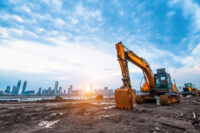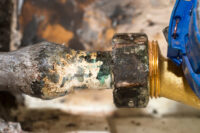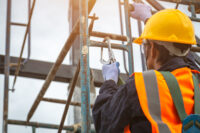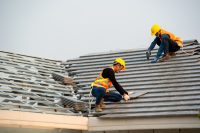Construction sites aren’t known for their cleanliness. From heavy machinery to fine particulate, construction generates plenty of contamination. When combined with rainfall, those pollutants wash away and cause adverse effects downstream. This is a significant contributor to the destructive properties of stormwater runoff. As impervious surfaces increase, there exists less and less natural ground for […]
On June 28, the Occupational Safety and Health Administration (OSHA) issued an advance notice of proposed rulemaking (ANPRM) on revisions to the agency’s construction and general industry lead standards (87 Federal Register (FR) 38343). OSHA is considering changes to the standards’ criteria for worker medical removal, as well as action levels (Als) and permissible exposure […]
On June 22, the Occupational Safety and Health Administration (OSHA) announced a settlement agreement in the case of a fatal fall on June 1, 2020. Industrial Insulation and Coatings LLC of Girard, Ohio, reached a settlement agreement with the agency to resolve litigation before the Occupational Safety and Health Review Commission. In June 2020, OSHA […]
This week (May 2-6) is the National Safety Stand-Down to Prevent Falls in Construction, which is a voluntary event that encourages employers to talk directly to employees about fall prevention and safety. This event is being held jointly by the Occupational Safety and Health Administration (OSHA), the National Institute for Occupational Safety and Health (NIOSH), the National […]
On February 25, the Occupational Safety and Health Administration (OSHA) announced it cited an Ohio contractor for the sixth time since 2018, issuing new citations for exposing workers to fall hazards at two separate building sites. ILS Construction of Hartsville, Ohio, faces proposed penalties totaling $237,013. The agency determined that ILS Construction and its owner, […]
Back to Basics is a new weekly feature that highlights important but possibly overlooked information that any EHS professional should know. This week, we examine falls in construction and how to prevent them. Falls are a major safety issue in any industry, but especially in construction, where they are the leading cause of death. According […]
The EPA is seeking public comment on its proposed 2022 Construction General Permit (CGP) for stormwater discharges from construction activity until July 12, 2021.
The American Society of Safety Professionals (ASSP) is offering safety professionals online fall protection safety resources in conjunction with the eighth annual National Safety Stand-Down to Prevent Falls in Construction, May 3–7.
A construction site is a dangerous place to work. Between falling objects, heavy equipment malfunction and multiple tasks being performed at once, there are many ways construction workers can get hurt. That’s why construction safety is important. Here are the top five construction site safety tips for heavy equipment operators and other construction workers to […]
On September 15, the Occupational Safety and Health Administration (OSHA) issued revisions to its construction industry standard for cranes and derricks (85 FR 57109). The new clarifications and exemptions reflect situations in which Federal Railroad Administration (FRA) regulations preempt OSHA standards.










